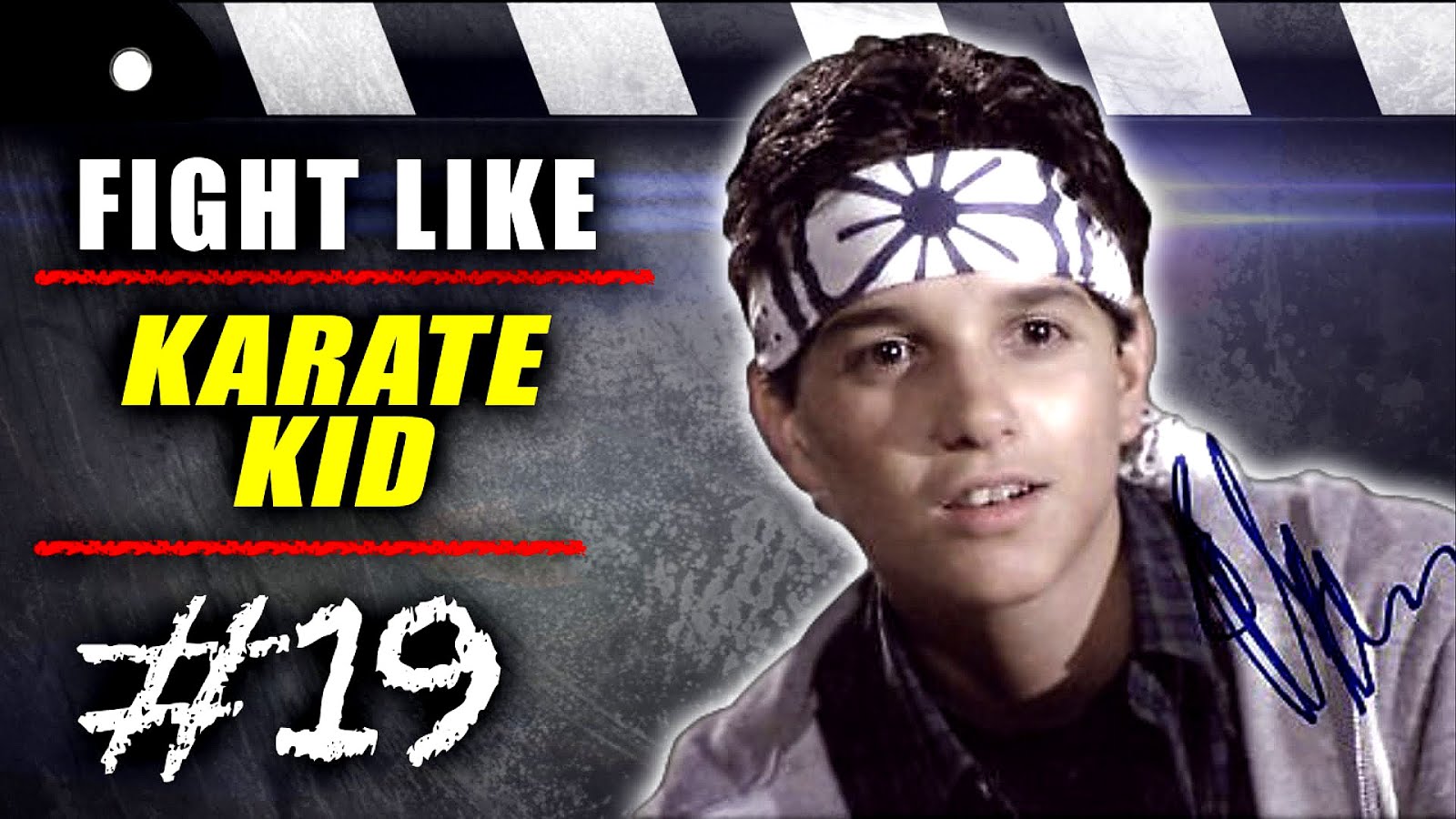The Karate Kid: A Complete Guide To The Franchise

Table of Contents
The Original Karate Kid (1984) and its Cultural Impact
The 1984 Karate Kid introduced us to Daniel LaRusso, a teenager who moves from New Jersey to California and finds himself the target of bullies. His journey of self-discovery and martial arts training under the tutelage of the enigmatic Mr. Miyagi is the heart of the film. This mentor-student relationship, built on patience, discipline, and unconventional training methods, became a cornerstone of the franchise's enduring appeal.
-
Plot Highlights: Daniel's struggle to fit in, his conflict with the Cobra Kai dojo, and his ultimate triumph at the All Valley Karate Tournament are all pivotal moments. The film expertly blends coming-of-age themes with exciting martial arts action.
-
Cultural Impact:
- Box Office Success: The film was a massive box office hit, solidifying its place in cinematic history.
- Influence on Martial Arts Films: The Karate Kid significantly impacted the martial arts genre, inspiring numerous imitators and shaping how martial arts were depicted on screen.
- Iconic Phrases and Training Techniques: Phrases like "Wax on, wax off," and "Sweep the leg," became instantly recognizable and deeply embedded in pop culture. Mr. Miyagi's unique training methods remain iconic.
-
Themes: The film explores universal themes of perseverance, self-defense, and finding your inner strength, resonating with audiences of all ages. It’s a story of overcoming adversity and finding your place in the world.
-
Soundtrack: The memorable soundtrack, featuring Bill Conti's score, further enhanced the film's emotional impact and continues to be popular today.
Sequels and the Expanding Universe
Following the original's success, three sequels expanded the Karate Kid universe. While not all achieved the same critical acclaim as the original, they deepened the characters' arcs and added to the franchise's mythology.
-
The Karate Kid Part II (1986): This installment introduced Mr. Miyagi's past and family in Okinawa, adding a new layer to his character and broadening the story's scope. Daniel faced new challenges, both personally and in the world of karate.
-
The Karate Kid Part III (1989): John Kreese returns with a vengeance, pushing Daniel to his limits and testing his loyalty to Mr. Miyagi. This film ramps up the martial arts action and further develops the conflict between Miyagi-Do and Cobra Kai.
-
The Next Karate Kid (1994): This installment features a new student, Julie Pierce, who learns karate from an older, wiser Mr. Miyagi. While shifting the focus, it maintained the core themes of the franchise.
-
Reception: While the sequels were commercially successful, they generally received less critical praise than the original, often criticized for varying degrees of plot complexity and a less focused narrative. However, they remain a vital part of the Karate Kid franchise's timeline. They built on the existing mythology, introducing new characters and expanding the existing storylines.
The Karate Kid Remake (2010) and its Differences
The 2010 remake, set in China, updated the story for a new generation while retaining the core themes of the original. Dre Parker, a young American, finds himself in a similar situation to Daniel, facing bullies and learning karate from a mysterious mentor.
-
Key Differences: The setting shifted to China, the characters were different, and the cultural context was altered. The focus remained on the themes of overcoming adversity and self-discovery, but the narrative was reimagined for a contemporary audience.
-
Reception: The remake received mixed reviews, with many long-time fans finding it a pale imitation of the original, while others appreciated the updated setting and fresh take on the story. It demonstrates the enduring interest in the Karate Kid concept.
-
Impact: The remake proves that the core themes of the original resonate across cultures and generations. While not as critically acclaimed as the original, its existence demonstrates the enduring appeal of the Karate Kid narrative.
Cobra Kai: The Next Chapter of the Karate Kid Franchise
The Cobra Kai series, streaming on Netflix, has revitalized the franchise. This series picks up decades after the original film, focusing on the ongoing rivalry between Daniel LaRusso and Johnny Lawrence.
-
Premise and Success: Cobra Kai explores the characters' lives as adults, delving into their pasts and showcasing the long-term impact of their rivalry. The series has achieved massive critical acclaim and popularity, reviving the franchise for a new generation.
-
Character Dynamics: The central conflict revolves around Daniel and Johnny, but the series introduces new characters and expands upon existing ones, creating complex relationships and compelling narratives. The series explores the different dojos and their differing philosophies on karate and life.
-
Expansion on Lore: Cobra Kai significantly expands the Karate Kid universe, filling in gaps in the original films' stories and introducing new storylines while maintaining the spirit of the original.
-
Critical Acclaim and Popularity: The series has been praised for its writing, acting, and its ability to both honor the legacy of the original films and create something new and compelling. Its success demonstrates a thriving fanbase ready to embrace a new chapter in the Karate Kid saga.
-
New Fans: Cobra Kai has introduced the Karate Kid franchise to a whole new generation of viewers, proving the timeless appeal of its central themes.
The Enduring Legacy of Miyagi-Do and Cobra Kai
The contrasting philosophies of Miyagi-Do and Cobra Kai are central to the franchise's enduring appeal.
-
Miyagi-Do: Emphasizes discipline, respect, and self-improvement through balance and inner peace. It teaches the importance of defense and restraint, reflecting a philosophy of peaceful conflict resolution.
-
Cobra Kai: Embraces an aggressive and merciless style of karate, prioritizing victory at all costs. It teaches students to strike first and show no mercy, reflecting a “survival of the fittest” mentality.
These opposing philosophies provide a rich backdrop for the exploration of themes of self-improvement, overcoming adversity, and the complexities of morality and ethics. They represent the internal conflicts characters face throughout the franchise, highlighting the importance of finding one's own balance and path.
Conclusion
From the original 1984 classic to the modern success of Cobra Kai, the Karate Kid franchise has undeniably left an enduring mark on pop culture. This complete guide has explored the evolution of the story, its characters, and its lasting impact. Whether you’re a longtime fan revisiting your favorite moments or a newcomer eager to discover this iconic series, the Karate Kid universe offers something for everyone. So, grab your gi, wax on, wax off, and continue your exploration of the Karate Kid franchise – you won’t be disappointed!

Featured Posts
-
 Casablanca Connection Stansted Airport Announces New Route
May 07, 2025
Casablanca Connection Stansted Airport Announces New Route
May 07, 2025 -
 Simone Biles Stunning New Hair Photos With Husband Jonathan Owens
May 07, 2025
Simone Biles Stunning New Hair Photos With Husband Jonathan Owens
May 07, 2025 -
 Lion Electrics Future Uncertain Court Appointed Monitor Suggests Liquidation
May 07, 2025
Lion Electrics Future Uncertain Court Appointed Monitor Suggests Liquidation
May 07, 2025 -
 Ako Sa Zmeni Svetovy Pohar 2028
May 07, 2025
Ako Sa Zmeni Svetovy Pohar 2028
May 07, 2025 -
 Cavaliers Vs Grizzlies Full Injury Report For March 14th Game On Fox Sports 1340 Wnco
May 07, 2025
Cavaliers Vs Grizzlies Full Injury Report For March 14th Game On Fox Sports 1340 Wnco
May 07, 2025
Latest Posts
-
 Papez Francisek Na Trgu Sv Petra Pozdrav Mnozici Pred Tradicionalnim Blagoslovom
May 07, 2025
Papez Francisek Na Trgu Sv Petra Pozdrav Mnozici Pred Tradicionalnim Blagoslovom
May 07, 2025 -
 Vodni Festival Songkran Vodnik Za Prvic
May 07, 2025
Vodni Festival Songkran Vodnik Za Prvic
May 07, 2025 -
 Songkran Na Tajskem Vodni Festival In Njegove Tradicije
May 07, 2025
Songkran Na Tajskem Vodni Festival In Njegove Tradicije
May 07, 2025 -
 Izbruh Vodne Bitke Dozivite Songkran Na Tajskem
May 07, 2025
Izbruh Vodne Bitke Dozivite Songkran Na Tajskem
May 07, 2025 -
 Has Jenna Ortega Aged Significantly Fans Debate The Change
May 07, 2025
Has Jenna Ortega Aged Significantly Fans Debate The Change
May 07, 2025
